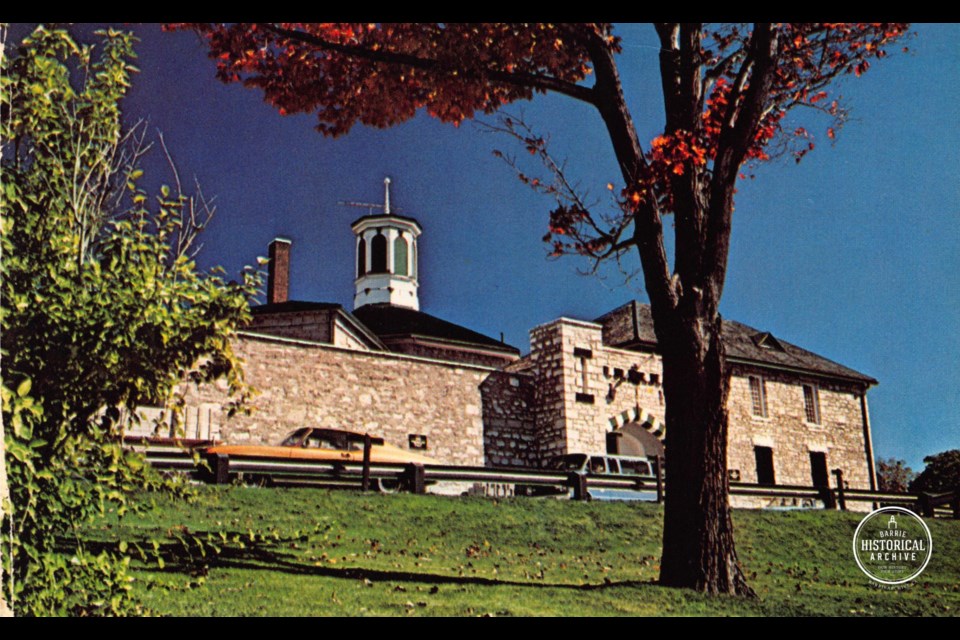This ongoing series from Barrie Historical Archive curator Deb Exel shows old photos from the collection and one from the present day.
Barrie Jail
The Barrie Jail is the last remaining original institutional building from when Barrie was the county seat.
It sits atop what is referred to as Court House Hill, on Mulcaster Street. Its polygonal configuration was created by Toronto architect Thomas Young and Barrie contractor Charles Thompson was hired to build the jail, starting with hauling the limestone from a quarry at Longford, which was located on the east side of Lake Couchiching.
The jail opened in 1841, and thanks to the architect’s unique design, it turned out there were several ways to escape, such as the fire-escape ladder mounted to the wall and the hole in the perimeter wall, which was used to pass firewood through.
The ‘Barrie Bucket’, as it was nicknamed in more recent times, had many ‘guests’ come and go, but James Carruthers was the first person to be hanged there.
Five people have met the hangman at the Barrie Jail, including John Tryon, and the last person to be hanged, Lloyd Wellington Simcoe (a story in 1, 2, 3 parts).
Capital punishment in Canada ended in 1976.
However, it was not just criminals that ended up in the Barrie Jail. In the late 1800s, it was a catch-all for law-breakers, the homeless, elderly, mentally ill, heavy drinkers and the disabled when there was nowhere else to place them.
Fortunately, the House of Refuge for Simcoe County opened in 1898 and the Barrie Jail was dedicated to criminals once again.
The Barrie Jail closed its doors to prisoners in 2001.



